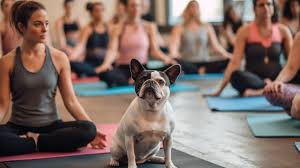Canine obesity has become one of the most common health challenges facing our four-legged companions, with studies indicating that over half of dogs in developed countries are overweight or obese. While the path to a healthier weight requires both dietary management and increased activity, jumping straight into an intensive exercise program can do more harm than good for overweight dogs. Creating a safe, effective exercise routine requires careful planning, gradual progression, and an understanding of your dog’s unique limitations and needs.
Understanding the Risks and Challenges
Before embarking on any exercise program with an overweight dog, it’s crucial to understand the unique challenges they face. Excess weight places tremendous strain on joints, particularly the hips, knees, and elbows, making high-impact activities potentially damaging. Overweight dogs also struggle with temperature regulation, as their extra insulation makes them prone to overheating even during moderate activity. Their cardiovascular systems work harder to supply oxygen throughout their bodies, leading to rapid fatigue and potentially dangerous exhaustion if pushed too hard.
Additionally, carrying extra weight affects a dog’s biomechanics, altering their gait and potentially causing muscle imbalances. Many overweight dogs have been sedentary for extended periods, meaning their muscles have weakened while their joints have stiffened. These factors combine to create a situation where enthusiasm for newfound activity must be carefully balanced with physical limitations to prevent injury, discouragement, or serious health complications.
The psychological aspect shouldn’t be overlooked either. Dogs who have been inactive may initially resist exercise or become anxious about activities that cause discomfort. Building positive associations with movement requires patience and creativity, ensuring that exercise becomes something your dog anticipates rather than dreads.
The Essential Veterinary Consultation
No exercise program for an overweight dog should begin without a thorough veterinary examination. Your veterinarian will assess your dog’s overall health, checking for underlying conditions that might affect their ability to exercise safely. Conditions like heart disease, respiratory issues, diabetes, or thyroid problems are more common in overweight dogs and can significantly impact exercise tolerance and safety.
During this consultation, your vet will evaluate your dog’s body condition score, take baseline measurements, and possibly recommend blood work to establish metabolic markers. They’ll assess joint health, looking for signs of arthritis or other orthopedic issues that might require modification of certain activities. This examination also provides an opportunity to discuss realistic weight loss goals and timelines, as healthy weight loss for dogs typically ranges from 1-2% of body weight per week.
Your veterinarian might also recommend specific supplements to support joint health during the weight loss journey or prescribe medications if pain management is necessary. They can provide guidance on warning signs to watch for during exercise and help you understand when to slow down or seek medical attention. This professional input forms the foundation of a safe, effective exercise program tailored to your dog’s specific needs.
Designing the Initial Exercise Program
Starting slowly is paramount when introducing exercise to an overweight dog. The initial phase should focus on building basic stamina and reintroducing movement patterns without overwhelming your dog’s system. Begin with sessions as short as 5-10 minutes, depending on your dog’s current fitness level and size. These brief sessions might seem insignificant, but they’re laying crucial groundwork for future progress.
Walking remains the gold standard for beginning exercise programs. Start with a leisurely pace on flat surfaces, allowing your dog to set the speed initially. Pay attention to their breathing—mild panting is normal, but gasping, excessive drooling, or reluctance to continue are signs to stop immediately. Plan routes that allow for easy shortcuts home if needed, and avoid exercising during the hottest parts of the day.
Frequency matters more than duration in the beginning. Two or three short walks daily are far more beneficial than one longer session. This approach helps build cardiovascular endurance while giving joints time to adapt to increased activity. Keep initial walks on soft surfaces when possible—grass or dirt paths are gentler on joints than concrete sidewalks. As your dog’s stamina improves over several weeks, you can gradually increase walk duration by 5-minute increments, always watching for signs of fatigue or discomfort.
Progressive Exercise Strategies
As your dog builds basic fitness over the first few weeks, you can begin incorporating variety and gentle challenges into their routine. Hill walking, even on gentle inclines, provides excellent low-impact resistance training that builds muscle while burning calories. Start with slight grades and short distances, allowing your dog to rest as needed. The beauty of hill work is that it naturally limits speed while increasing effort, making it ideal for building strength without impact stress. Check out our guide on how many calories should my dog eat
Swimming and hydrotherapy represent perhaps the safest, most effective exercise options for overweight dogs. Water’s buoyancy reduces joint stress by up to 90% while providing resistance that builds muscle and cardiovascular endurance. If you have access to a canine hydrotherapy pool, the controlled environment and professional supervision make it ideal for rehabilitation. For dogs new to swimming, start in shallow water where they can touch bottom, using a well-fitted life jacket for safety and confidence. Even walking in shallow water provides excellent resistance training while minimizing joint impact.
Interactive play can supplement structured exercise while strengthening your bond. Modified games of fetch using soft toys and shorter distances, gentle tug-of-war sessions with built-in rest breaks, or hide-and-seek games that encourage movement without intense running all provide physical activity within a fun context. Puzzle feeders and treat-dispensing toys encourage movement throughout the day, turning mealtime into an opportunity for light exercise.
Monitoring Progress and Adjusting Intensity
Successful weight loss requires consistent monitoring and adjustment of your exercise program. Keep a detailed log of daily activities, including exercise duration, type, and your dog’s response. Note any signs of lameness, excessive fatigue, or reluctance to participate, as these might indicate you’re progressing too quickly. Weekly weigh-ins help track progress, though remember that as your dog builds muscle while losing fat, scale changes might not fully reflect improved body composition.
Body condition scoring provides a more comprehensive assessment than weight alone. Learn to evaluate your dog’s body condition by feeling for ribs (they should be easily felt but not visible), assessing the waist from above (there should be a visible tucking), and checking the abdominal tuck from the side. Taking monthly photos from consistent angles helps visualize gradual changes that might otherwise go unnoticed.
Watch for positive indicators that suggest you can safely increase exercise intensity: improved breathing during and after exercise, increased enthusiasm for activity, better mobility and flexibility, and improved endurance without excessive fatigue. When these signs appear consistently, you can gradually increase exercise duration, add new activities, or introduce slightly more challenging terrain.
Recognizing and Responding to Warning Signs
Understanding when to slow down or stop exercise is crucial for your dog’s safety. Immediate warning signs requiring you to stop exercise include excessive panting that doesn’t resolve with brief rest, stumbling or lack of coordination, refusing to continue or lying down during exercise, limping or favoring any limb, or pale or bright red gums. These symptoms might indicate overexertion, overheating, or injury.
Post-exercise monitoring is equally important. Stiffness or lameness that appears hours after exercise suggests you’ve overdone it. Excessive fatigue lasting into the next day, loss of appetite, or behavioral changes like irritability or depression all indicate the need to reduce intensity. If your dog seems sore, provide rest days and consider consulting your veterinarian about pain management options.
Environmental factors significantly impact exercise safety for overweight dogs. Hot, humid weather dramatically increases the risk of heat stroke, so exercise during cooler morning or evening hours. In cold weather, overweight dogs might need extra warm-up time, and icy conditions pose special risks for dogs already dealing with compromised mobility. Always carry water and take frequent breaks, watching for signs of distress regardless of weather conditions.
Incorporating Mental Stimulation and Low-Impact Activities
Physical exercise alone isn’t enough for comprehensive weight management—mental stimulation burns calories while keeping your dog engaged without physical strain. Training sessions teaching new commands or tricks provide a mental workout while encouraging movement. Even five minutes of focused training can tire a dog mentally while reinforcing the human-animal bond.
Scent work activities tap into your dog’s natural abilities while encouraging gentle movement. Hide treats or toys around your house or yard, encouraging your dog to search for them. Start with easy hiding spots and gradually increase difficulty as your dog becomes more proficient. This activity can be adjusted for any mobility level and provides excellent mental stimulation.
Consider alternative therapies that support your exercise program. Canine massage helps maintain muscle flexibility and can identify areas of tension before they become problems. Passive range-of-motion exercises, where you gently move your dog’s joints through their natural range while they’re relaxed, help maintain flexibility. These activities complement active exercise while providing valuable bonding time.
Maintaining Long-Term Success
As your dog reaches their target weight, the focus shifts from weight loss to maintenance, but exercise remains crucial. The routine you’ve built should evolve into a sustainable lifestyle that keeps your dog fit and engaged. Many dogs who successfully lose weight discover a joy in movement they never experienced before, becoming more playful and energetic than they were even as younger, overweight dogs.
Continue varying activities to prevent boredom and maintain comprehensive fitness. Seasonal adjustments keep exercise interesting—swimming in summer, longer hikes in fall, indoor games during winter storms. Consider joining a dog walking group or enrolling in activities like agility or nose work classes designed for dogs of all fitness levels. These social activities provide motivation for both you and your dog while maintaining accountability.
Regular veterinary check-ups remain important for monitoring overall health and adjusting exercise recommendations as your dog ages. What works for a newly slim 5-year-old dog might need modification as they approach their senior years. Maintaining open communication with your veterinary team ensures your exercise program continues to serve your dog’s best interests throughout their life.
Nutrition and Exercise Integration
While exercise is crucial for weight loss, it must be coordinated with appropriate dietary management. The increased activity might initially increase your dog’s appetite, making it tempting to provide extra treats or larger meals. Resist this urge—weight loss occurs when calories burned exceed calories consumed. Work with your veterinarian to adjust feeding amounts based on your dog’s changing needs and activity levels.
Consider timing meals strategically around exercise. Avoid feeding large meals immediately before or after exercise to prevent bloat, particularly in deep-chested breeds. Small, healthy treats can be used as exercise motivators, but account for these calories in the daily total. Using your dog’s regular kibble as training treats ensures you’re not adding excessive calories while still providing rewards.
Hydration becomes increasingly important as activity levels rise. Always provide fresh water before, during, and after exercise. Some dogs benefit from electrolyte supplements during intensive exercise periods, though this should be discussed with your veterinarian. Monitor water intake as both excessive drinking and reluctance to drink can indicate problems requiring veterinary attention. Read our guide on dog weight loss supplements
Special Considerations for Different Breeds and Ages
Exercise programs must be tailored not just to weight status but also to breed characteristics and age. Brachycephalic breeds like Bulldogs, Pugs, and French Bulldogs face additional breathing challenges that become more pronounced with excess weight. These dogs require extra vigilance during exercise, with very gradual progression and careful attention to breathing difficulty. Swimming might be particularly challenging for these breeds due to their body structure.
Giant breeds carrying excess weight face exceptional joint stress, making low-impact exercise especially important. These dogs benefit from multiple short sessions rather than extended exercise periods. Conversely, high-energy breeds like Border Collies or Jack Russell Terriers might need mental challenges to supplement physical exercise, as their weight gain often stems from insufficient activity relative to their genetic programming for intensive work.
Senior dogs require special consideration as they often deal with arthritis alongside weight issues. Warm-up periods become crucial, and exercise might need to be divided into even smaller segments. However, maintaining mobility through appropriate exercise is vital for senior dogs, as complete inactivity leads to rapid muscle loss and further mobility decline.
Building a Support System
Creating lasting change requires support from everyone involved in your dog’s care. Ensure all family members understand and commit to the exercise program. Consistency is key—one family member allowing excessive treats or skipping walks can undermine progress. Consider designating specific family members for certain activities, making exercise a shared responsibility and bonding opportunity.
Professional support can make a significant difference in your success. Certified canine fitness trainers can design specific exercises for your dog’s needs and teach proper form. Veterinary rehabilitation specialists offer expertise in managing exercise for dogs with concurrent health issues. Some veterinary practices offer weight management programs with regular weigh-ins and support groups, providing accountability and encouragement.
Document your journey through photos, measurements, and notes about your dog’s improving abilities. Celebrate milestones—the first time your dog climbs stairs without hesitation, completes a full walk without excessive panting, or shows excitement about exercise time. These victories, both small and large, reinforce your commitment and help maintain motivation during challenging periods.
Conclusion: A Journey Worth Taking
Creating a safe exercise routine for an overweight dog requires patience, dedication, and careful attention to your dog’s individual needs. The journey from overweight and sedentary to fit and active doesn’t happen overnight, but the rewards—improved health, increased longevity, and enhanced quality of life—make every effort worthwhile. Remember that setbacks are normal and don’t indicate failure. What matters is consistent, gradual progress toward a healthier lifestyle.
Through careful planning, appropriate progression, and ongoing monitoring, you can help your dog achieve and maintain a healthy weight while building fitness and confidence. The exercise routine you develop becomes more than just a weight loss tool—it transforms into a foundation for years of active, joyful living. Your commitment to your dog’s health through safe, appropriate exercise is one of the greatest gifts you can provide, ensuring they enjoy their best possible life at every stage of their journey.
Read Also: techinfobusiness.com



